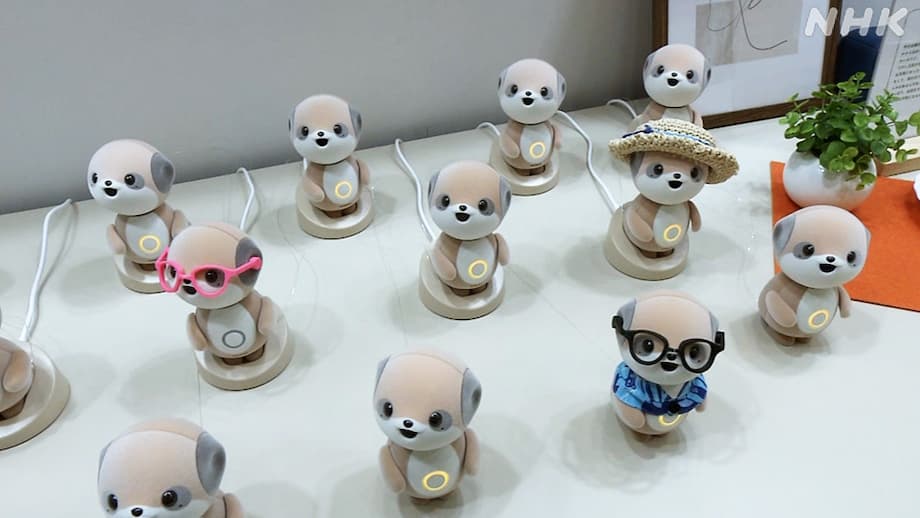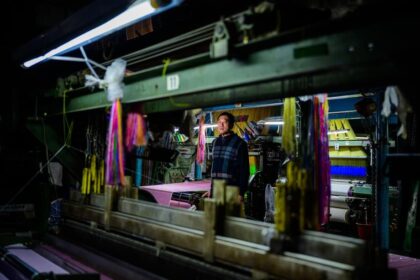AI and kidult buzz at Tokyo Big Sight
Japan’s biggest toy fair opened with a clear message for the industry and its fans. Artificial intelligence is moving from smartphones and computers into pockets, shelves, and living rooms, and many of the most talked about products are aimed at adults as much as children. At Tokyo Big Sight, more than 200 companies displayed roughly 35,000 items at the International Tokyo Toy Show, a four day event that splits two business days from two public days. One of the standout products is a tiny robot that looks like a meerkat and talks using generative AI. It is only about 12 centimeters tall, weighs around 200 grams, and even hides a small camera inside its mouth so it can recall scenes it has witnessed and chat with context.
The audience for many of these devices is changing. The meerkat style companion, positioned as a comfort gadget, is aimed squarely at women in their 20s and 30s rather than children. The show’s organizers say this reflects a broader shift. Despite a falling birthrate and higher living costs, Japan’s toy market has topped one trillion yen for a second year. By the latest count from the Japan Toy Association, revenue grew 7.9 percent in fiscal 2024 to about 1.0992 trillion yen (around 7.6 billion dollars). Market leaders credit inbound tourists and grown up fans who never lost the habit of play. The association has even formalized a category for kidult toys in its annual awards, a sign that adult buyers are now a core part of the business.
Why adults are now a core audience
The surge in adult demand is not limited to Japan. Researchers tracking the global market say adults accounted for about 17.3 percent of total toy sales in the United States in 2023, or close to 6.7 billion dollars, with adult purchases holding up even as overall sales slipped. In Europe, shoppers over 18 represented roughly 16 percent of sales last year. Analysts describe nostalgia, collecting, and stress relief as key drivers. Many buyers grew up with brands like Star Wars, Kamen Rider, and Barbie, and are now returning to those worlds with bigger budgets. Retailers are reacting by carving out more space for model kits, character goods, premium replicas, and designer figurines aimed at collectors.
Japan’s fair shows that trend in sharp focus. Blind box figurines continue to lure adult fans who want complete sets. Sylvanian Families baby figures have found a strong following among adult women, while detailed replicas and building sets, such as Bandai Spirits’ high grade robot models or Kawada’s nanoblock kits, turn play into a rewarding hobby. The Tokyo floor also caters to fans of virtual pets and digital play, bringing back storied brands with modern twists. The result is a market that reaches far beyond children and families, and now includes students, office workers, and overseas visitors shopping for limited items and character collaborations.
Inside the AI toy wave
AI is the fair’s biggest talking point, because it changes how toys interact. The meerkat style companion on display uses generative AI to hold longer, more natural conversations. It remembers past chats, images, and places so it can understand who it is talking to and what they like. Sharp’s Poketomo, a pocket friendly take on that idea, fits in a jacket or a small bag, connects with a smartphone app, and is slated for a Japan release in November at about 39,600 yen (roughly 269 dollars). Its AI draws on chat logs, location data, and images captured by an onboard camera to personalize interactions and keep conversations flowing. That capability is a major leap for a category once limited to simple voice commands and preprogrammed responses.
At one booth, a company representative explained why the meerkat companion was built for adult women who want daily comfort rather than fast paced play.
A lot of women in their 20s and 30s feel they cannot express themselves in regular life, so we hope they feel comforted and want to live with the robot by their side.
Companion robots in your pocket
The promise of these devices is intimacy without the demands of a real pet or friend. A pocket companion can respond to a greeting, remember the user’s preferences, and adjust its tone as it learns. That is a significant shift from earlier generations where the thrill mostly came from novelty. Today’s units can manage basic context, tie a new comment to a prior moment, and even recall a shared walk or a specific place on a map. Sharp’s design team leans into that vision with gestures and eye contact in a tiny form factor, hoping the device becomes a daily habit rather than a toy that gathers dust.
Rapid growth backs the strategy. According to industry data shared at the show, high tech interactive toys, robots, and PC related playthings delivered more than 40 percent annual revenue growth, outpacing other category gains. Makers also prize portability, so buyers can carry AI companions on commutes or errands. That shifts playtime into small moments throughout the day, a pattern that suits adult routines.
Emotional AI and mental wellness
Other companies position AI as a soothing companion. Moflin, a fuzzy robot pet from Vanguard Industries now sold in partnership with Casio, markets itself as a mental health buddy for kids and adults. It senses touch and sound, shifts its mood based on care, and learns whom it belongs to. Owners can peek at its emotional state in an app, dress it up, and tuck it into a charging nest. Priced around 398 dollars in Japan, Moflin shows how companionship is moving from simple gimmicks toward emotionally responsive interaction backed by machine learning.
That intimacy raises questions consumers should weigh. Emotional AI, sometimes called affective computing, works by reading signals like voice, movement, and behavior patterns to infer feelings. A recent study of Japanese attitudes found interest in such tools paired with worries about privacy, autonomy, and fairness, with women expressing stronger concerns about youth data and constant monitoring. Devices that store voice logs, locations, and images can enable richer conversations, yet they also demand responsible design, clear data policies, and parental controls where children are involved.
Nostalgia meets innovation
Tech headlines do not crowd out old favorites. The fair puts a modern spin on beloved brands to capture both kids and adults. Bandai’s Tamagotchi is reborn in deeper form with Tamagotchi Paradise, a device that lets players manage virtual worlds from the microscopic to the cosmic level and unlocks new interactions when two units link. For fans of giant robots, Bandai Spirits showed precision replicas tied to events and exhibits. Kawada’s nanoblock Godzilla kit challenges builders with tiny pieces and includes effects that reference the monster’s roar. Each of these products courts adult collectors while remaining accessible to teens.
Holiday friendly gadgets also line the aisles. Takara Tomy’s Pokemon themed smartphone style toy lets players photograph their surroundings and turn them into habitats inside the device. A new transformation belt geared to the latest Kamen Rider show lights up the body with an energetic display. These releases cater to the seasonal rush while tapping into franchises that span generations. The mix, nostalgia plus new tech, has proven resilient as toymakers look to keep sales momentum through year end.
Accessibility and play for all
Inclusive design is quietly changing the feel of classic toys. A new Licca chan doll house adds details that reflect modern living, such as a parcel delivery box and an automatic door lock, then goes further with tactile design. The floors vary in texture so children with visual impairments can explore the space through touch. This approach brings sensory play to a familiar brand and shows how traditional toys can welcome more users without losing their charm.
To handle summer heat, makers also showed indoor fitness toys that keep kids moving without stepping outside. Compact equipment, balance games, and motion driven gadgets give families ways to burn energy in apartments. The goal is simple, offer play that fits Japanese homes and weather patterns. At the same time, these products appeal to adults who want a short exercise burst during a work from home day.
Global supply and price pressures
Toy making is global, and that shapes prices. Much of Japan’s toy output is produced in factories in China, a fact that matters when products are shipped to the United States or Europe. After trade negotiations, a 15 percent U.S. tariff rate has been discussed for some Japanese goods. If a toy is built in China and then exported to the United States, Chinese tariffs may apply as well, which could raise retail prices for certain items. Industry groups are watching how these rules affect holiday shipments and the timing of new releases.
Akihiro Sato of the Tokyo chapter of the Japan Toy Association explained how this supply chain reality filters into store shelves.
About 80 percent of Japanese toy manufacturers products are actually produced in China, so when selling from China to the United States, Chinese tariffs are added, which could lead to higher prices for some manufacturers.
At the same time, producers from China are a bigger presence in Tokyo’s halls. Companies such as Robotime showed intricate wooden puzzles and miniature houses, betting that Japan’s demanding customers will push them to improve craftsmanship and design. Japan’s market is known for strict quality standards and a strong preference for domestic brands, which makes it tough for newcomers but also offers a proving ground. Exhibitors from China’s Chenghai District, a hub for toys, treat the fair as a gateway to buyers across Japan and beyond.
By the numbers
The fair’s scale, and the size of the market behind it, give context to the buzz. This year’s show gathered more than 200 companies and around 35,000 products, with two days for industry and two open to the public. Last year’s edition drew over 80,000 visitors across four days. The Japan Toy Association reports the domestic market cleared one trillion yen for a second year, with fiscal 2024 rising to roughly 1.0992 trillion yen. High tech interactive categories, including robots and PC related play, saw revenue growth north of 40 percent according to event briefings.
AI did not crowd out analog fun. Wood based kits, construction toys, and tactile puzzles have their own aisles, giving visitors a way to step away from screens. Brands with deep histories, from Beyblade to Rubik’s Cube and Licca chan, refreshed their lines to keep longtime fans engaged while offering accessible play to new ones. The common thread is experimentation, which helps the industry expand even as the number of children declines.
Upcoming releases and holiday momentum
Many of the most discussed items arrive in time for gift season. Sharp’s Poketomo is scheduled for a Japan launch in November, while Moflin’s latest model ships in early November domestically. Retailers are preparing displays that target both families and solo adult buyers, a strategy that worked in recent peak seasons. Limited edition character goods and building sets will land in waves through late fall. Meanwhile, the fair’s two public days give fans a chance to try products early and share impressions online, a powerful nudge for preorders.
If you want to explore the full exhibitor list and floor highlights, the Japan Toy Association and national broadcasters maintain show pages with product roundups and schedules. For an overview of the tech and adult focus shaping this year’s fair, see coverage from NHK and United Press International. These reports detail how AI companions, character goods, and collector lines are driving attention and purchases at Tokyo Big Sight. Interested readers can find more at NHK’s event page here and UPI’s recap here.
Key Points
- Tokyo’s toy fair featured more than 200 exhibitors and around 35,000 products across four days at Big Sight
- AI companions, including a meerkat style pocket robot, drew crowds with memory based chats and app links
- Japan’s toy market rose 7.9 percent in fiscal 2024 to about 1.0992 trillion yen, the second straight year above one trillion
- Adults now make up a growing share of buyers, with nostalgia and collecting fueling demand in Japan, the United States, and Europe
- High tech interactive toys, robots, and PC related play delivered over 40 percent revenue growth among tracked categories
- Licca chan’s new doll house adds tactile floors and modern home touches to support accessible play
- Chinese makers expanded their presence at the show as tariffs and overseas production complicate pricing
- Key releases such as Sharp’s Poketomo and other AI companions are timed for November and the holiday season












